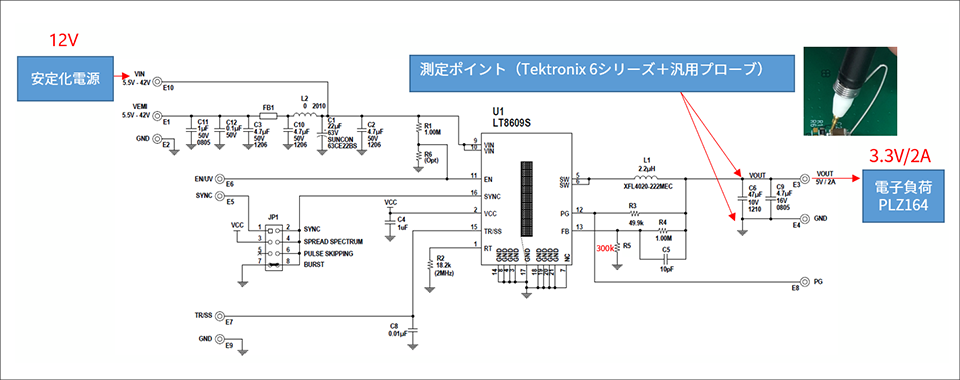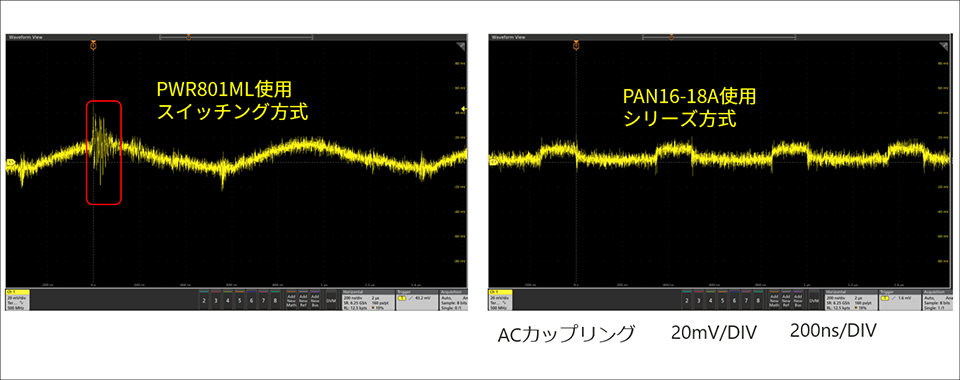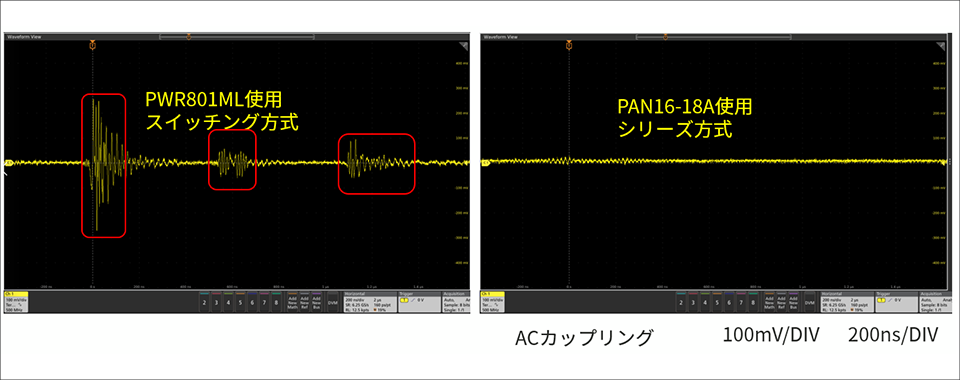This article describes the effects of the measurement environment when measuring ripple waveforms of buck switching regulators.
Switching regulators are often thought of as noise sources on production boards and are considered "circuits that emit noise". Perhaps for this reason, we sometimes receive inquiries about the causes and countermeasures, assuming that all the noise we see with an oscilloscope when checking the waveform of a switching regulator is caused by the switching regulator.
This time, we will introduce an example of noise caused by power supply problems.
Ripple waveform measurement
In the previous technical article, "What is the effect of power supply noise on measurement results?" When creating an article comparing waveforms with power rail probes and other probes, I also reported that noise was improved by changing from a stabilized power supply to a battery.
This time, we will check whether there is a difference in noise in the ripple measurement results by using a regulated power supply with a different method.
Evaluation board and measurement environment
This time, we used the LT8609S evaluation board, which is a step-down DC/DC converter with built-in 42V synchronous rectification MOSFET from Analog Devices.
Evaluation board settings
For the LT8609S original evaluation board (DC2522A), I changed the feedback resistor R5 from 182KΩ to 300KΩ and set the output voltage to 3.3V.
The evaluation conditions are
・Input voltage 12V
・Output voltage 3.3V
・Load current 2A
・Switching frequency 2MHz
was set to , and the ripple was measured.
Measurement environment
・Electronic load PLZ164 from Kikusui Electronics Co., Ltd. is used. Connect between VOUT and GND
・Oscilloscope Tektronix 6 series is used. Ripple observed across output capacitor C6.
・ Uses general-purpose probe TPP1000 + GND spring.
・For the stabilized power supply, we compared and verified the switching method and the series method. Connect between VIN and GND

Comparison of measured waveforms with different regulated power supplies
DC/DC converter ripple waveform comparison
The regulated power supply was tested using the following switching and series schemes. The measurement results are shown in Figure 2. As a result, when using the switching method, noise was more noticeable in the output ripple area (particularly in the red frame), and when using the series method, there was relatively little noise.
・Switching method (KIKUSUI PWR801ML)
・Series method (PAN16-18A)

Directly check the output of the regulated power supply
Figure 3 shows the results of observation by removing the evaluation board and directly probing the output of the regulated power supply.
In the stabilized power supply compared this time, noise was relatively conspicuous when using the switching method, and relatively little noise was seen when using the series method.

Summary
We found that there is a difference in noise generated depending on the type of stabilized power supply.
The noise tends to be relatively large in the switching method, and less in the series method.
・Although the noise was the lowest when using a battery (*), if it is necessary to use a stabilized power supply, it may be a good idea to use a series power supply, which has relatively low noise.
* If you want to see the waveform of the battery connection, what is the effect of power supply noise on the measurement results? Please refer to
Click here for recommended seminars/workshops
[Online Seminar] Analog Solution Power Supply Design Seminar <free>
[Online Seminar] Analog Solution Thermal Design Seminar <Free>
Click here for recommended articles/materials
Click here to purchase products
Click here for manufacturer site/other related links
Inquiry
If you have any questions regarding this product, please contact us using the form below.
Analog Devices Manufacturer Information Top
If you want to return to Analog Devices Manufacturer Information Top, please click the button below.
